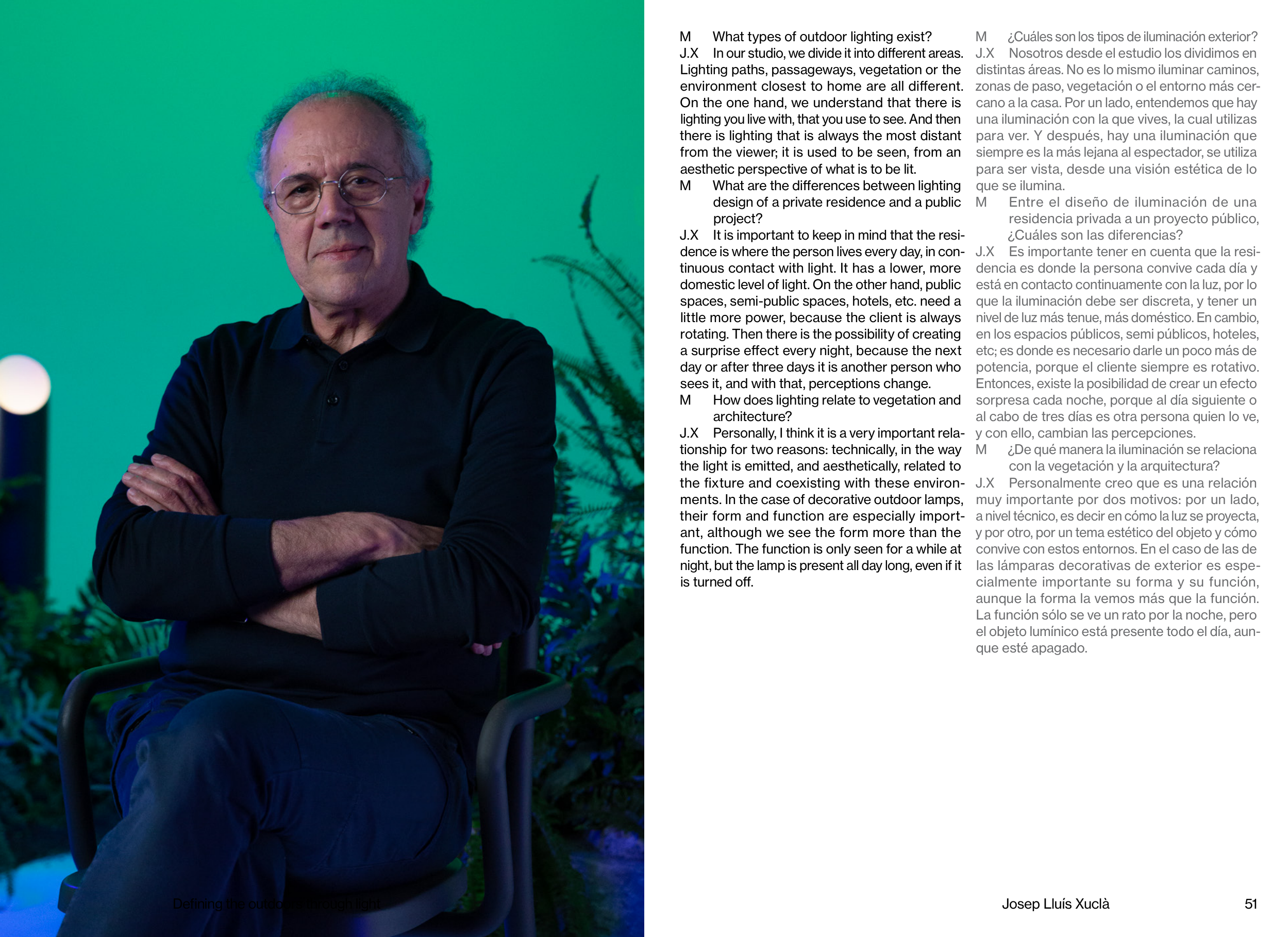What types of outdoor lighting exist?
In our studio, we divide it into different areas.
Lighting paths, passageways, vegetation or the
environment closest to home are all different.
On the one hand, we understand that there is
lighting you live with, that you use to see. And then
there is lighting that is always the most distant
from the viewer; it is used to be seen, from an
aesthetic perspective of what is to be lit.
What are the differences between lighting
design of a private residence and a public
project?
It is important to keep in mind that the resi-
dence is where the person lives every day, in con-
tinuous contact with light. It has a lower, more
domestic level of light. On the other hand, public
spaces, semi-public spaces, hotels, etc. need a
little more power, because the client is always
rotating. Then there is the possibility of creating
a surprise effect every night, because the next
day or after three days it is another person who
sees it, and with that, perceptions change.
How does lighting relate to vegetation and
architecture?
Personally, I think it is a very important rela-
tionship for two reasons: technically, in the way
the light is emitted, and aesthetically, related to
the fixture and coexisting with these environ-
ments. In the case of decorative outdoor lamps,
their form and function are especially import-
ant, although we see the form more than the
function. The function is only seen for a while at
night, but the lamp is present all day long, even if it
is turned off.
Defining the outdoors through light
M
J.X
M
J.X
¿Cuáles son los tipos de iluminación exterior?
Nosotros desde el estudio los dividimos en
distintas áreas. No es lo mismo iluminar caminos,
zonas de paso, vegetación o el entorno más cer-
cano a la casa. Por un lado, entendemos que hay
una iluminación con la que vives, la cual utilizas
para ver. Y después, hay una iluminación que
siempre es la más lejana al espectador, se utiliza
para ser vista, desde una visión estética de lo
que se ilumina.
Entre el diseño de iluminación de una
residencia privada a un proyecto público,
¿Cuáles son las diferencias?
Es importante tener en cuenta que la resi-
dencia es donde la persona convive cada día y
está en contacto continuamente con la luz, por lo
que la iluminación debe ser discreta, y tener un
nivel de luz más tenue, más doméstico. En cambio,
en los espacios públicos, semi públicos, hoteles,
etc; es donde es necesario darle un poco más de
potencia, porque el cliente siempre es rotativo.
Entonces, existe la posibilidad de crear un efecto
sorpresa cada noche, porque al día siguiente o
al cabo de tres días es otra persona quien lo ve,
y con ello, cambian las percepciones.
¿De qué manera la iluminación se relaciona
con la vegetación y la arquitectura?
Personalmente creo que es una relación
muy importante por dos motivos: por un lado,
a nivel técnico, es decir en cómo la luz se proyecta,
y por otro, por un tema estético del objeto y cómo
convive con estos entornos. En el caso de las de
las lámparas decorativas de exterior es espe-
cialmente importante su forma y su función,
aunque la forma la vemos más que la función.
La función sólo se ve un rato por la noche, pero
el objeto lumínico está presente todo el día, aun-
que esté apagado.
Josep Lluís Xuclà
M
J.X
M
J.X
M
J.X
M
J.X
51


